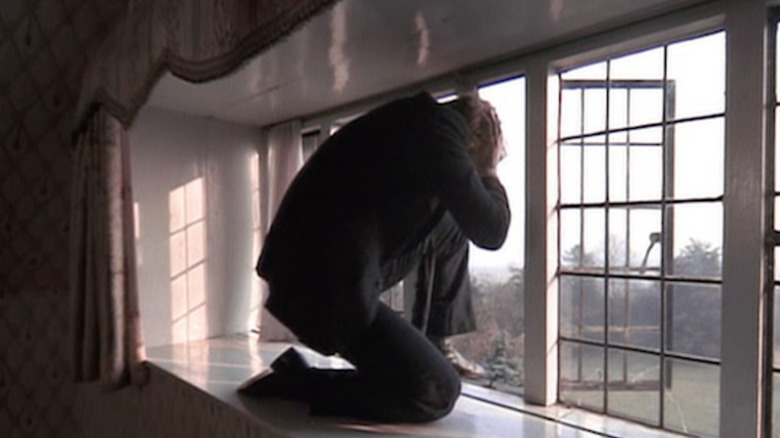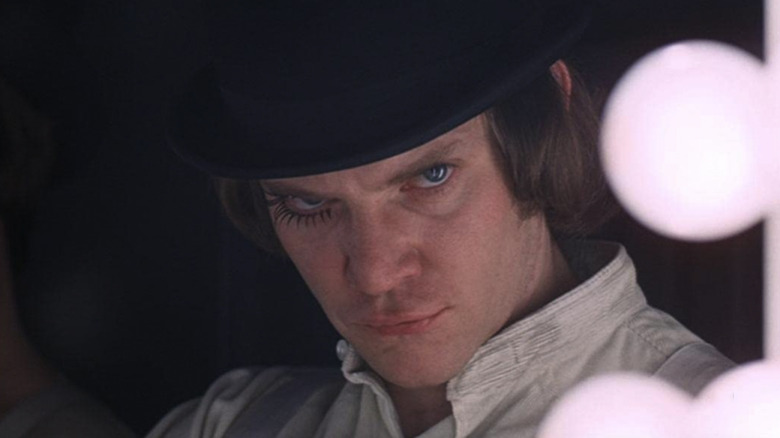Stanley Kubrick was famously a tough director to work with. This was mostly because of his poor treatment of his actors, which I believe was an aspect of his almost pathological perfectionism. Kubrick had to get every detail in every film he made exactly as he envisioned it in his mind, and he didn't care if he had to mentally scar someone like Shelley Duvall for life in order to achieve that.
Sometimes, though, Kubrick's approach would not require damage to an actor's well-being, but to some equipment. This is the case in one of the pivotal scenes in "A Clockwork Orange." The film's main character, Alex DeLarge, a violent and charismatic hoodlum in a dystopian, futuristic England, has been imprisoned and is undergoing various forms of torture and reconditioning. He gets the opportunity to take his own life and attempts to do so by jumping from a window.
The shot showcases the suicide attempt from the subjective point of view of Alex himself, relaying the jump from the window to the ground below from the perspective of the jumper. It was another of the countless examples of Kubrick having a very specific idea of what he wanted in a film, and all it required was the sacrifice of a single lens.
A Leap Of Faith

Kubrick was known for his use of unorthodox shots and attention to detail, and the shot of Alex's leap required extra preparation.
In an interview with the magazine "Sight & Sound" from 1972, Kubrick discussed how he made the suicide attempt scene happen. As with most of his ideas, the director needed very specific supplies to craft the scene just as he envisioned. The item required in this instance? A Newman Sinclair clockwork mechanism camera. "It's a beautiful camera and it's built like a battleship," Kubrick said.
But even a camera of its heft wouldn't survive the drop without some protection. So Kubrick's team used polystyrene boxes to create 18 inches of protection around the camera, with a slice cut out for the lens. With the camera fully armored, Kubrick described what happened next:
"We then threw the camera off a roof. In order to get it to land lens first, we had to do this six times and the camera survived all six drops. On the final one it landed right on the lens and smashed it but it didn't do a bit of harm to the camera. This, despite the fact that the polystyrene was literally blasted away from it each time by the impact."
It's ironic that Kubrick, who was unafraid to damage actors in whatever way he needed (including seriously injuring Malcolm McDowell), managed to film this scene without harming the camera at all. If he took that sort of care with everyone he worked with, perhaps Kubrick would be better regarded not just as a director, but as a human.
Read this next: The Most Controversial Scenes In Sci-Fi Movies
The post A Pivotal Clockwork Orange Scene Called For Stanley Kubrick Tossing A Camera Off The Roof appeared first on /Film.
